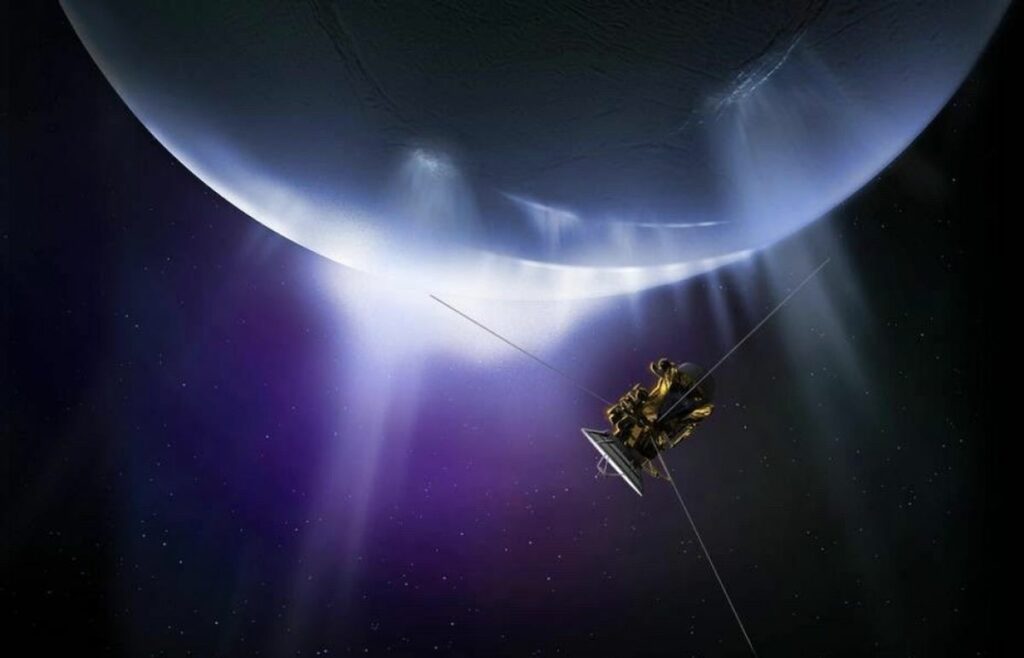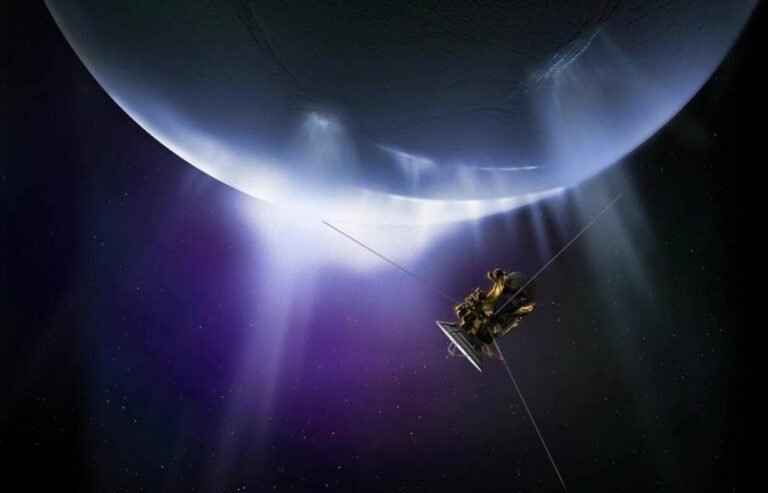Without actually landing on Enceladus, life may have been discovered there.
The Cassini mission has demonstrated that Enceladus meets several criteria for being suitable for life. The moon contains a deep ocean with active hydrothermal vents underneath its thick, frozen surface. There is a plenty of energy and water. Researchers have now proposed a mission to check if life is present on Enceladus, and it won’t even need landing there. This may not be sufficient to support life.
The ocean is not easily accessible since the ice crust of the moon is between 5 and 30 kilometers (3.1 and 18.6 miles) deep. Plans call for landers that can gently bore through the shell and through the ice, which seems like an impossible task. A robot crawling through these fractures has also been proposed as a hard solution, even before taking into account the difficulties researchers would have to go through to ensure the ship is fully sanitary. Enceladus discharges water plumes into space through holes in its surface.

Researchers proposed last year that methane in the plumes may be a sign of life as long as there is a good chance that there is life elsewhere in the cosmos. They take it a step farther in a recent piece. They predict that even a modest number of living things on Enceladus would produce enough organic material for an orbiting expedition to collect.
The paper’s first author, Antonin Affholder, a postdoctoral research associate at UArizona, stated in a statement: “We were shocked to find that the potential abundance of cells would barely equate to the biomass of one solitary whale in Enceladus’ global ocean.” “The ecosystem of Enceladus could be quite little. And yet, according to our simulations, it would be effective to add just enough organic molecules or cells to the plumes so that they may be detected by detectors on a future spacecraft.”
The primary goal of the trip would be to show the absence of life, not to locate it. The research presented here calculates the greatest quantity of organic material that a spacecraft of this type may find in the absence of life. It would be time-consuming to do the reverse, gather proof for life.
The orbiting spacecraft would require roughly 0.1 milliliters of material in order to collect a sample of a cell-like substance from a plume. Although this is a little amount, it would require more than 100 flybys of Enceladus due to how dispersed the plumes are. This is a large number, but by no means an impossibility. In its first four years of operation, Cassini completed 74 distinct orbits of Saturn and 45 flybys of Titan, the biggest moon of the ringed planet. Cassini stayed in the system for 13 years in total.
Régis Ferrière, senior author of the new paper and associate professor at the UArizona, added that “by simulating the data that a more prepared and advanced orbiting spacecraft would gather from just the plumes alone, our team has now shown that this approach would be enough to confidently determine whether or not there is life within Enceladus’ ocean without actually having to probe the depths of the moon.” This viewpoint is fascinating.
It could be a years before a mission is launched to investigate this theory, but it is fascinating to think that we might discover life on Enceladus without ever setting foot on the planet.
Do not forget to share your opinion with us to provide you with the best posts !




0 Comments